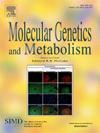线粒体疾病生物标志物GDF15是动态的,可在唾液中量化,并与疾病严重程度相关
IF 3.5
2区 生物学
Q2 ENDOCRINOLOGY & METABOLISM
引用次数: 0
摘要
循环生长分化因子15 (GDF15)是线粒体疾病和衰老的生物标志物,但其在血液和其他生物体液中的自然动态和对急性应激的反应尚未得到很好的定义。使用来自患有罕见线粒体疾病(MitoD)的MiSBIE参与者的大量样本,我们检测了40名患有m.3243的受试者290份血浆和860份唾液中的GDF15生物学一个比;G突变(n = 25)或单个大规模mtDNA缺失(n = 15)。与健康对照组相比,两个MitoD组的血液和唾液GDF15均显著升高(p <;0.0001)。为了研究GDF15蛋白在唾液中的来源,我们分析了GTEx数据集中48个组织中GDF15的表达,并在唾液腺分泌细胞中发现了GDF15的高表达。尽管MitoD水平长期升高,唾液GDF15在实验实验室精神应激(无体力消耗)下进一步升高,而MitoD中应激诱导的血浆GDF15反应性与对照组相比减弱。使用基于家庭的唾液收集方案,我们发现与其他应激相关的代谢激素类似,唾液GDF15在醒来时最高,并在45分钟内迅速下降61.2%。在MitoD中,唾液GDF15水平升高持续一整天。在临床上,唾液GDF15与神经系统症状、疲劳和功能能力相关。重要的是,压力诱发的GDF15变化并没有放大疾病严重程度的关联,而是持续地增加了GDF15症状联系的效应大小,这表明对线粒体OxPhos缺陷和急性精神压力反应的心理生物学趋同。这些结果为探索唾液GDF15作为线粒体疾病的非侵入性监测方法打开了大门,并呼吁进一步研究将线粒体、精神压力和GDF15动态联系起来的心理生物学过程。本文章由计算机程序翻译,如有差异,请以英文原文为准。
The mitochondrial disease biomarker GDF15 is dynamic, quantifiable in saliva, and correlates with disease severity
Circulating growth differentiation factor 15 (GDF15) is a biomarker of mitochondrial diseases and aging, but its natural dynamics and response to acute stress in blood and other biofluids have not been well defined. Using extensive samples from MiSBIE participants with rare mitochondrial diseases (MitoD), we examined GDF15 biology in 290 plasma and 860 saliva aliquots from 40 subjects with the m.3243 A > G mutation (n = 25) or with single, large-scale mtDNA deletions (n = 15). Compared to healthy controls, both MitoD groups exhibited significantly elevated blood and saliva GDF15 (p < 0.0001). To examine the origin of GDF15 protein in saliva, we profiled GDF15 expression in 48 tissues from the GTEx dataset and identified high GDF15 expression in salivary gland secretory cells. Despite being chronically elevated in MitoD, saliva GDF15 further increased in response to experimental laboratory mental stress alone (without physical exertion), whereas the stress-induced plasma GDF15 reactivity was blunted in MitoD compared to controls. Using a home-based saliva collection protocol, we show that similar to other stress-related metabolic hormones, saliva GDF15 is highest upon awakening and declines rapidly by 61.2 % within 45 min. Elevated saliva GDF15 levels persisted throughout the day in MitoD. Clinically, saliva GDF15 correlated with neurological symptoms, fatigue, and functional capacity. Importantly, stress-evoked changes in GDF15 did not amplify noisy disease severity associations, but rather consistently increased the effects sizes for GDF15-symptoms connections, pointing to converging psychobiology underlying the responses to mitochondrial OxPhos defects and acute mental stress. These results open the door to exploring saliva GDF15 as a non-invasive monitoring approach for mitochondrial diseases and call for further studies examining the psychobiological processes linking mitochondria, mental stress, and GDF15 dynamics.
求助全文
通过发布文献求助,成功后即可免费获取论文全文。
去求助
来源期刊

Molecular genetics and metabolism
生物-生化与分子生物学
CiteScore
5.90
自引率
7.90%
发文量
621
审稿时长
34 days
期刊介绍:
Molecular Genetics and Metabolism contributes to the understanding of the metabolic and molecular basis of disease. This peer reviewed journal publishes articles describing investigations that use the tools of biochemical genetics and molecular genetics for studies of normal and disease states in humans and animal models.
 求助内容:
求助内容: 应助结果提醒方式:
应助结果提醒方式:


